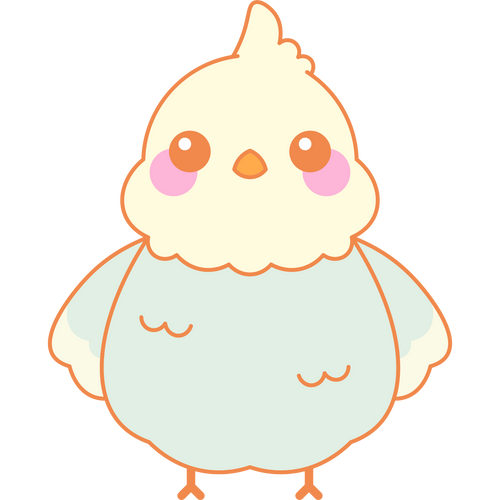First, let's answer the question of what hyperkeratosis is. Hyperkeratosis is an abnormal thickening of the outer layer of the skin. If your bird has hyperkeratosis, you can easily spot them on their cere. I've seen many female budgies having them, but it can also affect males. Some parrots only have them on their cere, but your parrot can also have them on their feet. With female budgies (depending on their mutation), you can easily spot them on their care since they tend to have a crustier cere than their male counterparts.
Kiwi has hyperkeratosis. Kiwi only has it on her cere and not on her legs. She's four years old and had it for all her life. Her cere looks a bit different than other females of her kind. When you look at it from the side view as it slightly protrudes outward.

Well? How do you actually get rid of hyperkeratosis? You technically can't... Oftentimes, assuming that it's not diet-related (in most cases, it isn't), a bird will have it for the remainder of its life. In most cases, It really doesn't negatively affect your bird, but it's always best to keep a watchful eye on it.
If your bird has it on its cere, you don't want to allow it to grow too much. It can potentially impact their breathing. Birds who mainly have their feet affected may need a special ointment to put on their feet. Coconut oil, olive oil, and palm oil are all good options and aren't poisonous to your bird. Ensure you have already had your vet do it for you once and show you how it is done.
Like Kiwi, if your bird has the build-up on their cere, soak their cere (without covering the nostrils) with a little bit of coconut or olive oil and slowly remove the dead skin. If you manage to get some in their nostrils, use a q-tip to remove it. If we are close to our vet visits, I make my vet take care of it. If you want a more detailed explanation on how to remove their dead skin, click here.
With that being said, I have heard hyperkeratosis is caused by a lack of Vitamin A in your bird's diet. Simple blood work can tell you if that is the case. Additionally, hyperkeratosis is said to be also a cause of hormones. I initially assumed Kiwi had it due to hormones. Since Snowy, Limon and Edward all had a big crush on her, I thought that maybe it's making her really hormonal. Then came the painful deaths of both Limon and Snowy. I actually assumed that her excess skin would be at a halt now that she's not always hormonal. I was wrong. Kiwi still has it, and the dead skin on her cere hasn't stopped growing. She's genetically more predisposed to it.
I also want to note that, in the very beginning, I had many people negatively commenting on her cere. It actually made me really upset that people would only notice her unique-looking cere. It was often not associated with a good thing. I had many people saying I was an "animal abuser," assuming I didn't take her to the vet. Kiwi and all my birds have seen an avian specialist for regular checkups. Our avian veterinarians are highly qualified and very good at what they do. Getting these comments to use really affect me, and it also didn't help that there really weren't many people speaking about what her condition really was. I knew my vets knew, I knew, but surprisingly many people elsewhere didn't know about what hyperkeratosis is. This also made me want to make a blog post about it which many people have seen.


Learn More About What Hyperkeratosis Is!
Comment (1)
I would like to THANK YOU for posting this . I have a female parakeet that has hyperkeratosis . I searched for answers why Polly’s cere was like this . I read so many articles that said it was mites but I knew it couldn’t be because I have a male and his cere is not like that plus I have treated them for mites . I finally came across your article and it gave me the answers I was looking for . I had to eventually take her to the vet because her nares began to close . She is doing well and I just wanted to say THANKS again for all the information you provided. I hope Kiwi is doing well : )